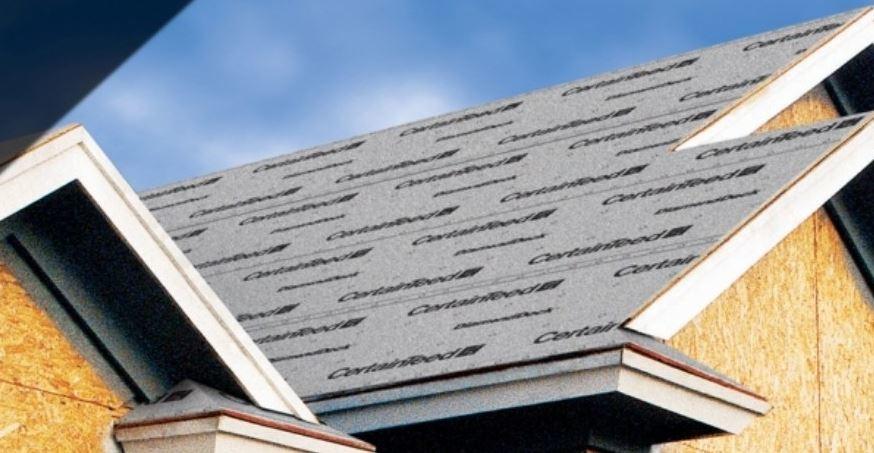
When people think of getting a roof they usually think about the shingles as the most important part. While shingles are important, the underlayment is what really works hard to protect your home from severe weather. This gets installed first underneath all of the other roofing materials.
There are three main types of roofing underlayment:
- Asphalt-saturated felt
- Non-bitumen synthetic underlayment (Also known as “synthetic underlayment”)
- Rubberized asphalt underlayment
Asphalt-saturated felt used to be the “go-to” until about 15 years ago when synthetic underlayment grew in popularity.
- Commonly referred to as “felt paper” or “tar paper”
- Roofing felt is made of varying blends of cellulose (natural plant fibers), polyester, bitumen or asphalt
- Basemat: Saturated with asphalt for water resistance
- Designed for application across the entire roof deck
Synthetic/Non-bitumen synthetic underlayment is the preferred underlayment of most roofing professionals today.
- High-quality synthetic underlayment like CertainTeed’s DiamondDeck™ has the added benefit of scrim reinforcement for added slip resistance, even when wet
- Basemat: Saturated in asphalt with the addition of fiberglass (giving synthetic products superior tear resistance and stability)
- Designed for application across the entire roof deck
Rubberized asphalt is a more expensive option because it contains higher percentages of asphalt and rubber polymers, making it waterproof.
- Rubberized asphalt roofing underlayment often has a sticky back with a protective membrane removed prior to installation
- The special backing creates the waterproof seal between the underlayment and a clean roof deck
- In severe winter regions, waterproof roofing underlayment at the eaves of a roof is helpful
- Designed for application at the valleys and around roof protrusions

Why do I need underlayment?
It is a moisture barrier providing your roof with an extra layer of protection shingles alone can’t match. Your shingles serve their own purpose as the first line of defense. Shingles reflect the sun’s rays, withstand wind and block precipitation. The problem is shingles overlap and aren’t sealed at all corners so they can be lifted by strong winds. This makes shingles vulnerable to tear-off or infiltration by wind-driven rain. Shingles can also become brittle from age or due to an un-ventilated attic. Water-resistant roofing underlayment is enough for the surfaces of most roofs. It provides the protection that your roof needs during and after installation. Even without the added protection of shingles a superior product like CertainTeed’s DiamondDeck™ can withstand some seriously extreme weather.
Ready to get started on your roofing project?
Our team of experts will walk you through the project from point A to point B making sure you have the right materials for your home. Start your project the right way and keep your roofing system working great. Schedule an appointment with A&D Exteriors or send us a message and let us know what you’re looking to get done!



